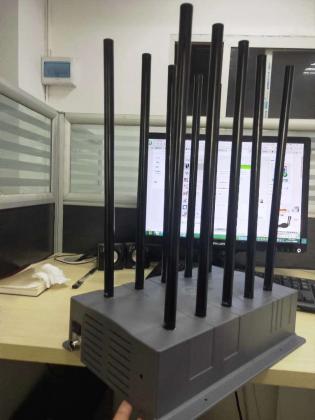Understanding the propagation law of the radio wave band helps us use signal jammer.
8. 2m frequency band (144.00~148.00MHz)
This is a typical VHF frequency band, a very active local mobile communication frequency band. There is basically no reflection on the signal ionosphere of this frequency band. The radio waves mainly propagate through the line-of-sight of direct waves. When encountering buildings or mountains during transmission, reflected waves will be generated. Therefore, it can only be used for short-distance communication. This is to carry out amateur satellite communications and lunar reflection communications experiments for long-distance communications. Antennas in this frequency band have the highest production rate for amateur radio enthusiasts. There are various high-gain directional and omnidirectional antennas, vehicle-mounted mobile whip antennas and compact handheld antennas, and so on.

9. 0.7m frequency band (430.00~440.00MHz)
It belongs to the UHF frequency band, the direct wave propagation is more than the 2m frequency band, and the reflection and refraction phenomena are more obvious than the 2m frequency band. At the same time, the attenuation of the air is larger than that of the 2m frequency band, which is less suitable for long-distance communication. When using a longer cable, the attenuation caused by the cable to the signal must be considered at the beginning. Due to the high frequency and low noise in this frequency band, and various manufacturers are competing to introduce a variety of small and fully functional frequency band antennas that can be made smaller and can be set in cars, therefore, mobile communications in this frequency band are very active. In order to solve the problem of short communication distance, many amateur radio enthusiasts set up the repeater at a high place. With the help of the transponder's differential signal, the communication range can be greatly increased. The enthusiasts only need to use a small power and a simple antenna to communicate with each other. The remote radio station QSO. In summer and other seasons when the weather is unstable, an abnormal propagation phenomenon called "atmospheric duct" (see Figure 12) often occurs. Radio waves are refracted back and forth between the three temperature abrupt layers of the atmosphere, and the attenuation is very small and travels far away. There are also phenomena such as meteor trail reflection and tropospheric scattering, which will also cause radio waves in the 2m frequency band to propagate beyond the line of sight. The radio waves of this band can pass through the ionosphere. In recent years, car radios and small mobile phones have gradually replaced the 2m frequency band and become the main local mobile communication frequency band. Combined with the establishment of high-performance transponders, a good local communication network can be formed. .
This frequency band can be used for communication experiments such as meteor trail reflection, tropospheric scattering, lunar reflection, and amateur satellite communication. Especially in recent years, several high-orbit and high-power amateur radio satellites have been launched, which makes communication time longer, easy tracking, and antenna requirements. Simple, reduced equipment requirements, making it easier to use satellite communications, so there are many participants. In order to adapt to mobile communications, most of the antennas in this frequency band are vertically polarized antennas. Many manufacturers have introduced a variety of dual-band antennas shared by 144/430MHz to facilitate amateur radio enthusiasts to communicate between the two frequency bands.
10. 0.23m frequency band (1260.00~1300.00MHz)
This frequency band is basically a microwave frequency band, mainly in the form of direct wave propagation, but amateur radio enthusiasts use this frequency band to carry out over-distance communication experiments such as meteor trail reflection and tropospheric scattering. In addition, satellite communication is also carried out through amateur communication satellites. experimental. Due to the relatively high frequency of this frequency band, the water vapor and raindrops in the air will attenuate the electric waves. At the same time, the loss of transmission cables and cable plug connectors will also be large. Fortunately, due to the short wavelength, it is easy to use antenna arrays or parabolic antennas to make high-gain antennas. Because the frequency band of this frequency band is very wide, in addition to regular communication, amateur digital communication and amateur TV communication experiments can also be carried out.
